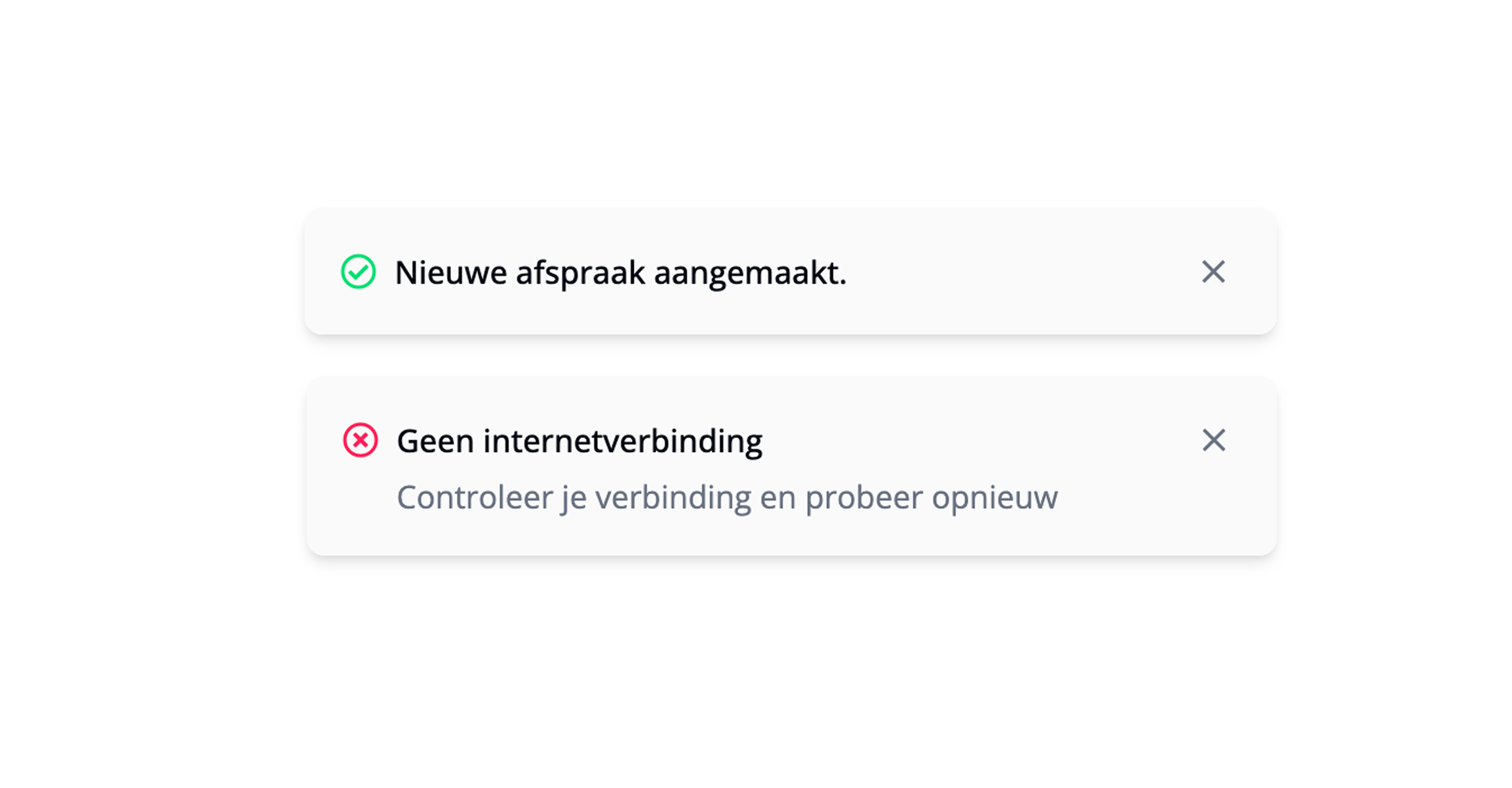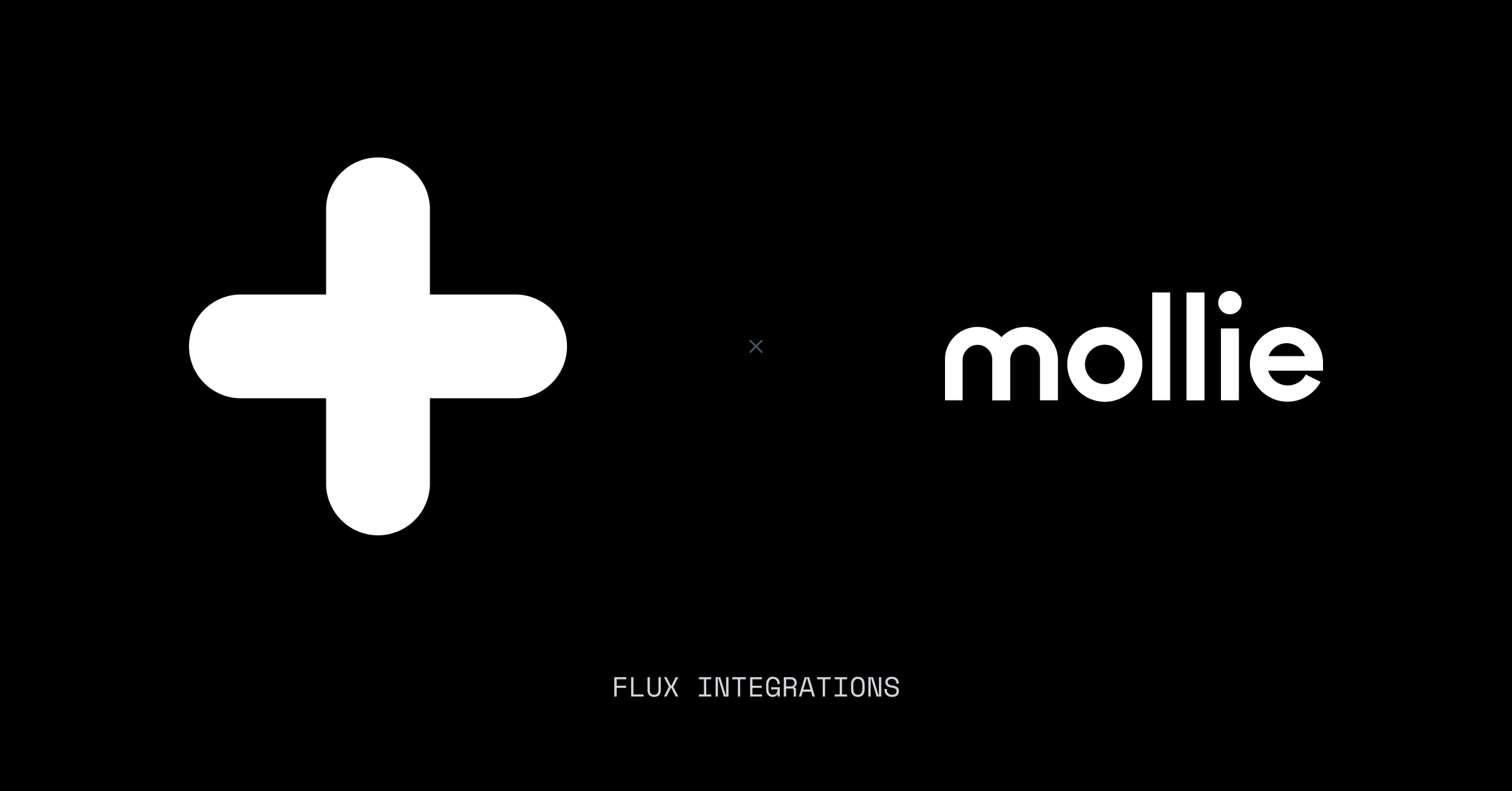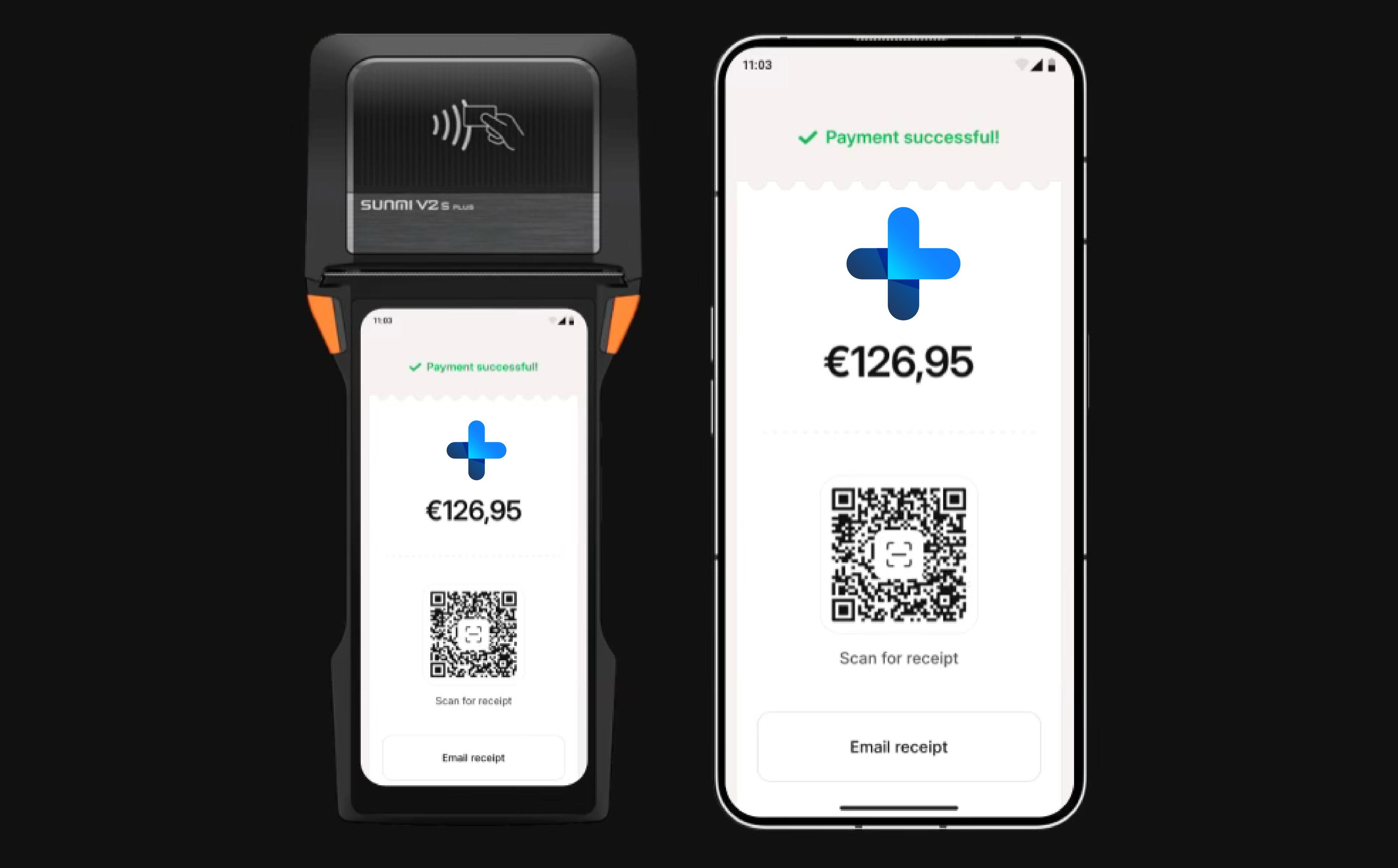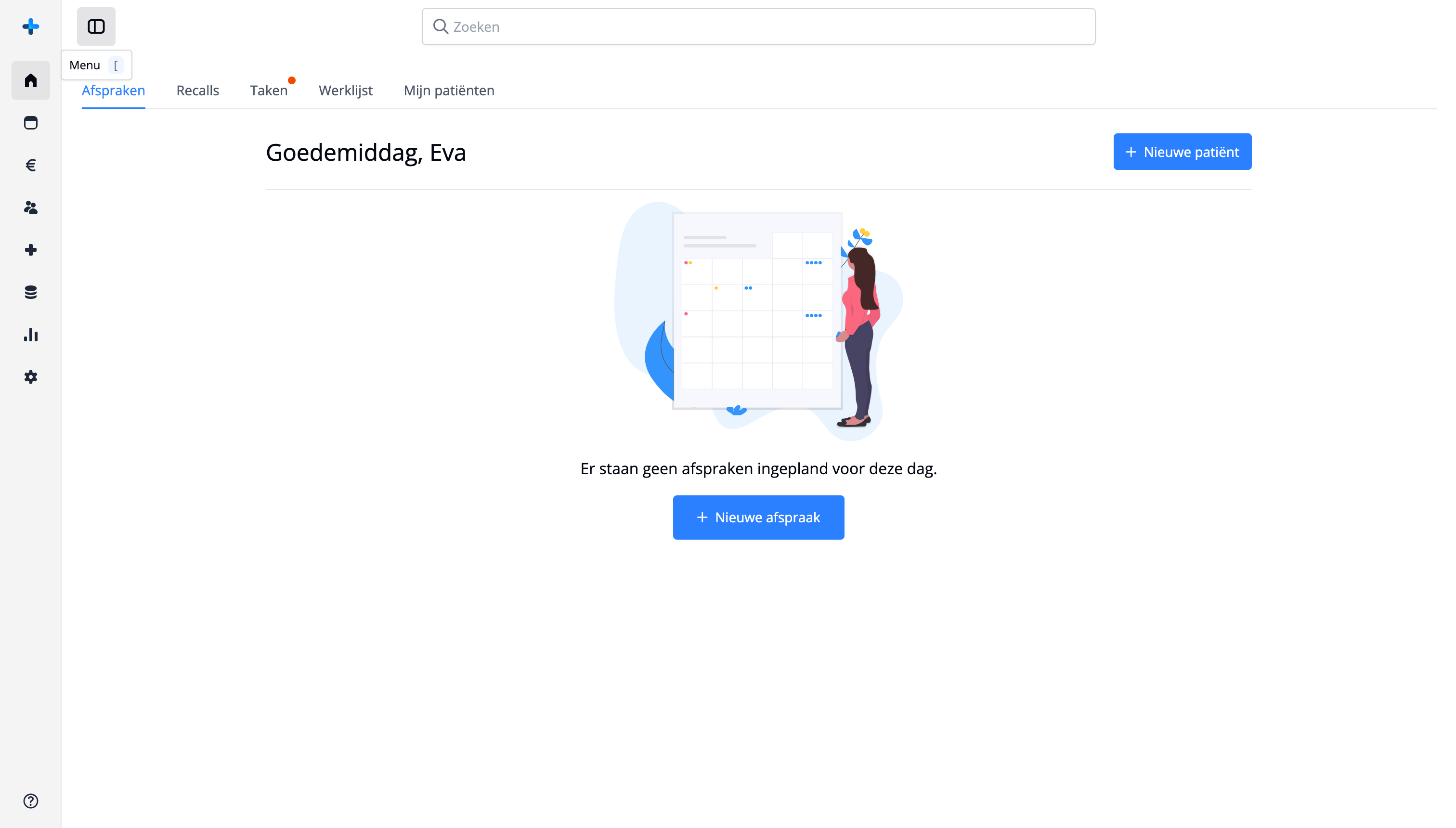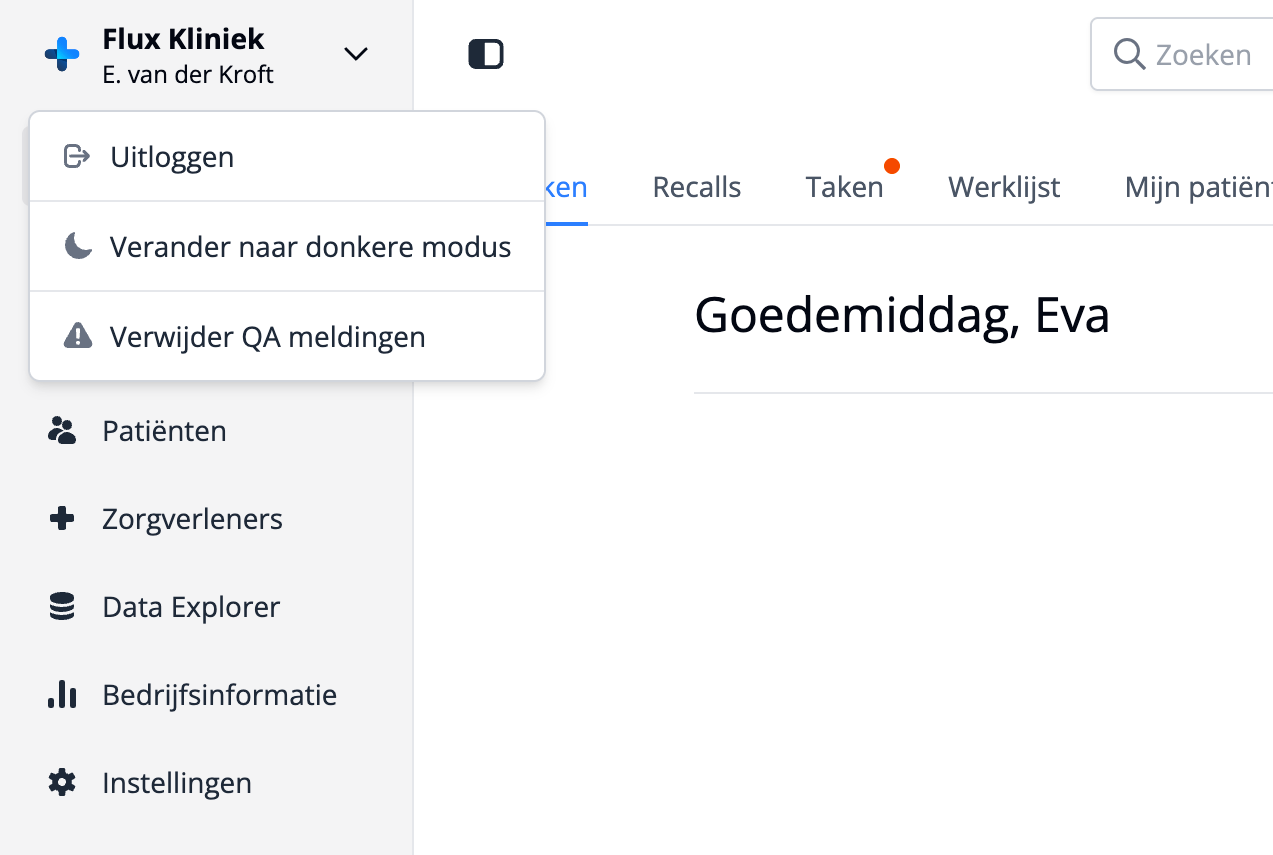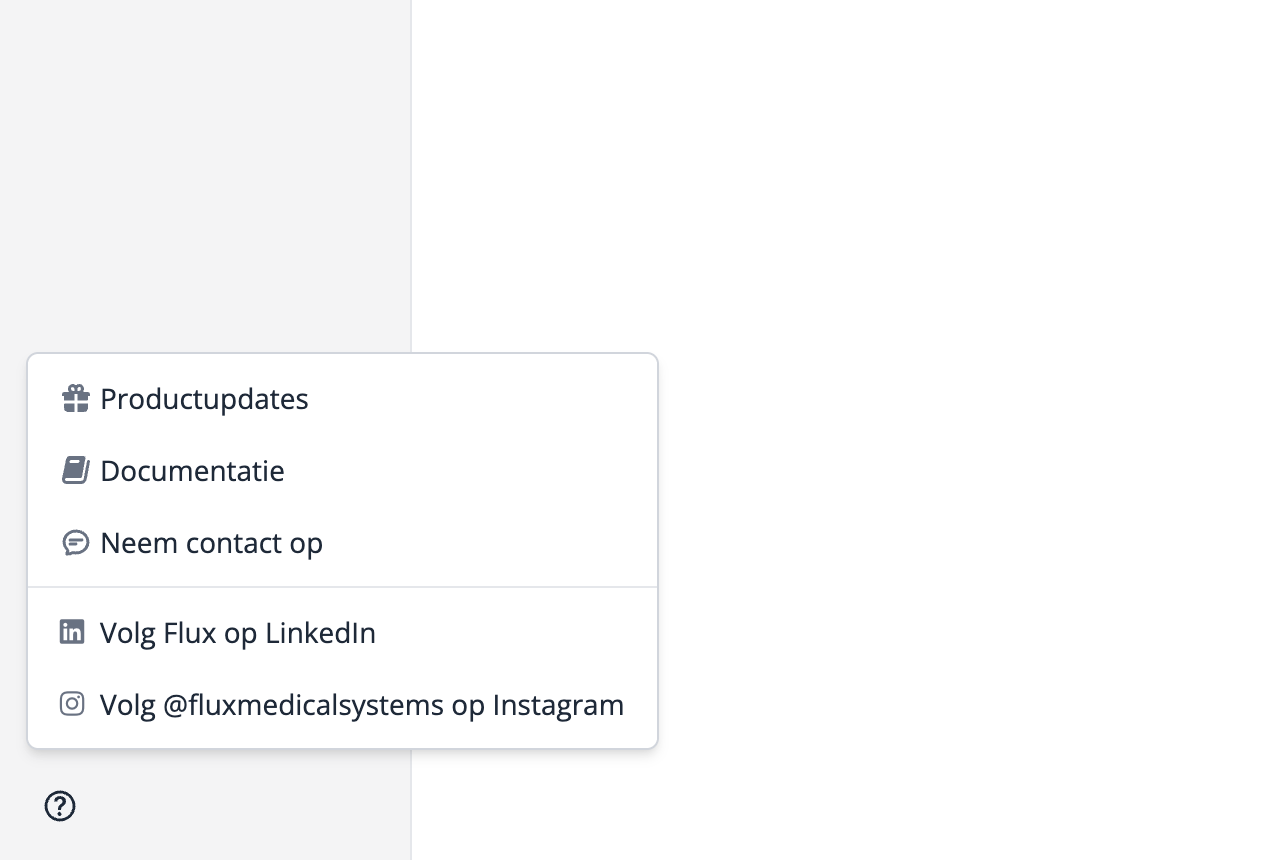The command menu in Flux makes searching and executing actions more efficient. Instead of a standalone search bar, you now have a single central menu where you can both navigate to patients, invoices, and pages, and execute commands directly. Whether you need to open a patient record quickly, view an invoice, or switch to dark mode, everything is at your fingertips.
Previously, you needed separate fields or buttons to search for patient information, invoices, or navigation items. The new menu unifies all of that functionality into a single search field. As you type, Flux immediately shows suggestions for:
- Patients (by patient number via
#-mentioning, name, birthday, email, or phone number) - Invoices (by invoice number or linked patient information)
- Page and section navigation (for example, Agenda, Settings, Documentation)
- Actions (such as 'Enable dark mode', 'Log out', or 'Contact support')
The more you type, the more specific the suggestions become. Flux applies fuzzy matching, recognizes partial words, and corrects minor typos so you don’t have to guess the exact phrase.
Results in the menu are organized into clear sections: 'Patients', 'Invoices', 'Navigation', and 'Actions'. Within each group, commands are further subdivided by function type, making it easy to skim and find what you need. Each command is accompanied by a distinctive icon that indicates whether it’s a search, navigation, setting, or administrative task. This way, you can identify the right option at a glance—even when there’s a long list of suggestions.
Open or close the menu anywhere in Flux with Ctrl + K (Windows/Linux) or Cmd + K (Mac). Use the arrow keys to navigate through suggestions and press Enter to execute the selected command. To close the menu without selecting anything, press Esc, use Ctrl/Cmd + K again, or click outside the menu area. You’ll return immediately to where you left off.
Just like the old search feature, Flux shows relevant suggestions after each keystroke. The new command menu goes a step further:
- Autocomplete: As you type, the most likely commands appear at the top of the list.
- Fuzzy matching: The system recognizes typos and incomplete words.
- Multiple search fields in one: You can search by patient name and birthdate simultaneously by simply separating terms with a space. For example,
Janssen 1985 will display all patients with the last name Janssen born in 1985. Flux automatically applies the appropriate filters.
- Open: Ctrl + K (Windows/Linux) or Cmd + K (Mac)
- Close: Esc, Ctrl/Cmd + K, or click outside the menu
- Navigate: Arrow keys ↑ ↓
- Execute: Enter or mouse click
With future Flux updates, additional commands will be added so that new sections—such as expanded reporting tools, advanced patient overviews, or integrations with document management—will be seamlessly included in the command menu. By clustering all functionality into a single interface with smart grouping, context-aware prioritization, and live filtering, you save time and reduce clicks when opening patient records, processing invoices, or changing settings. This ensures that the most relevant options are always within reach and allows Flux to adapt to your growing workload.

